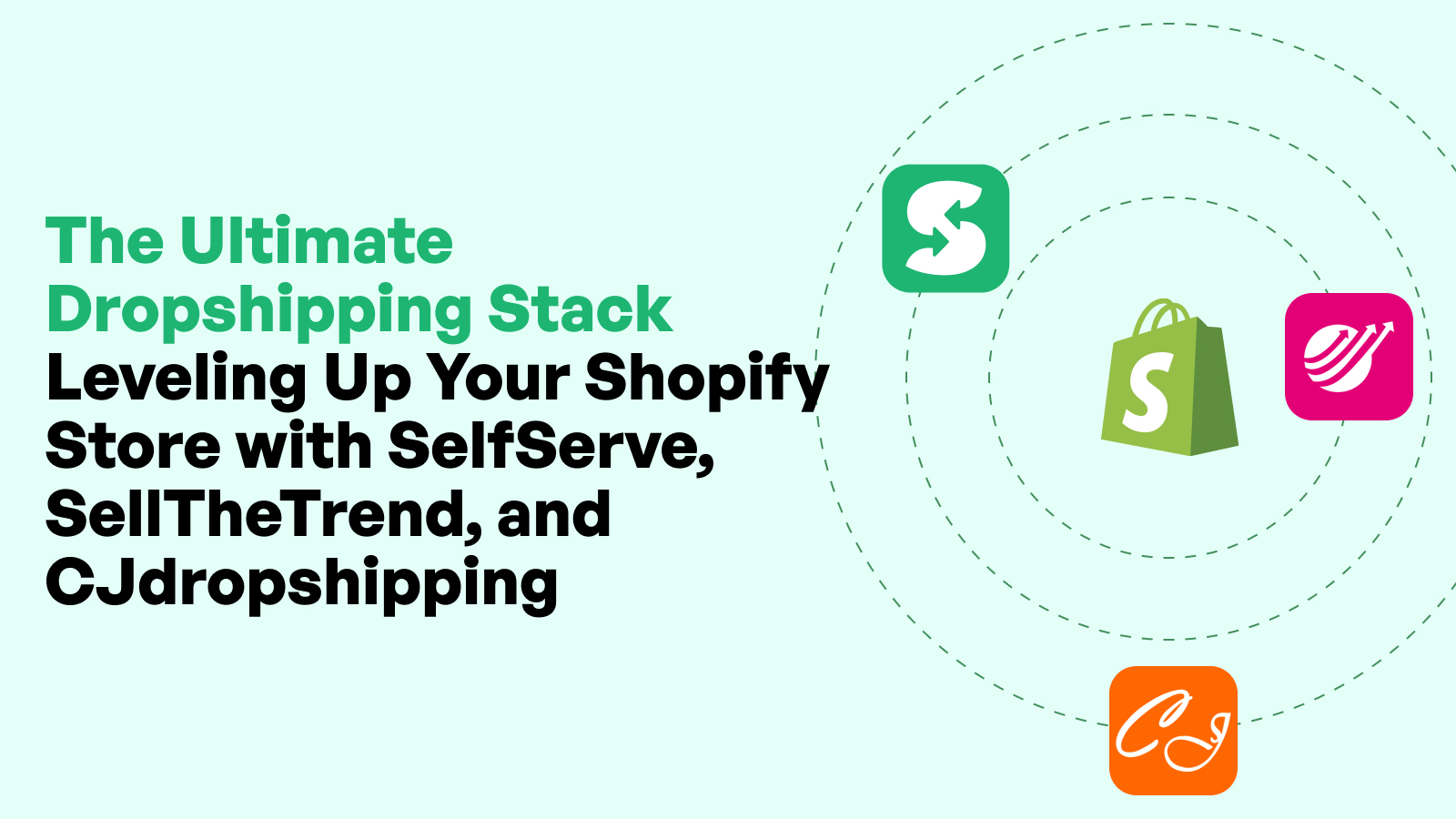How to Sell Internationally on Shopify Without Breaking the Bank

Understanding the Global Ecommerce Opportunity
Why International Expansion Matters for Shopify Merchants
For Shopify merchants, expanding internationally opens the door to new revenue streams, higher profit margins, and brand scalability. As local markets become saturated, looking beyond borders allows businesses to tap into regions with less competition but growing demand. Consumers worldwide are becoming increasingly comfortable with cross-border purchases, especially when stores provide localized experiences. From Europe to Southeast Asia, more shoppers are turning to online platforms to fulfill their needs. For a Shopify merchant, this global demand represents a powerful opportunity to grow beyond their domestic footprint and position the brand for long-term success.
Key Global Markets for Ecommerce Growth
Not all markets present equal potential. Emerging regions such as Southeast Asia, the Middle East, and parts of Africa have seen a dramatic rise in digital adoption. Meanwhile, established markets like Canada, the UK, and Australia offer predictable regulatory environments and purchasing behavior similar to the U.S. Shopify merchants should consider targeting countries where language barriers are minimal, shipping logistics are feasible, and digital payment infrastructure is developed. Conducting country-specific research allows merchants to prioritize based on market size, growth potential, consumer trends, and competition.
Common Barriers to Entry for Small Businesses
Despite the opportunity, international expansion isn’t without challenges. Common barriers include language and currency differences, taxation complexities, logistics management, and local regulations. Many Shopify merchants mistakenly assume that selling internationally requires massive upfront investment. While large-scale expansion can be costly, lean methods exist for testing international waters without overextending resources. Awareness of these barriers—and how to strategically address them—allows small businesses to grow sustainably without financial strain.
Laying the Foundation for International Sales
Evaluating Readiness for Cross-Border Commerce
Before going global, Shopify merchants must assess their operational readiness. This includes evaluating inventory capabilities, fulfillment processes, return policies, and customer service bandwidth. Merchants should identify whether their product catalog appeals to international audiences or requires localization. They should also assess platform capabilities—fortunately, Shopify provides native tools like Shopify Markets to streamline cross-border commerce. Understanding internal capacity ensures businesses don’t overpromise and underdeliver to global customers.
Localizing Product Listings and Content
Localization goes beyond translation. It involves adapting product descriptions, headlines, measurements, and even product visuals to resonate with each region’s cultural norms. For instance, sizing conventions vary between North America, Europe, and Asia, and localized imagery can build trust more effectively than generic visuals. Shopify merchants should avoid relying solely on automated translations and instead invest in native-speaker editing, especially for key pages like product listings and checkout instructions.
Structuring Global Collections and Navigation
A confusing site structure can deter international buyers. Merchants should create region-specific collections or categories, ensuring that users from different countries see relevant products. Shopify allows merchants to tailor navigation by market, so users in the UK might see “Jumpers” instead of “Sweaters,” while Australians are shown measurements in centimeters. Clarity and ease of navigation are essential to reduce bounce rates and increase conversions.
Affordable International Store Setup on Shopify
Using Shopify Markets for Region-Specific Selling
Shopify Markets enables merchants to manage multiple international storefronts from a single backend. It allows segmentation by country or region, supports localized domains, and adjusts content based on the visitor’s location. This tool minimizes the need for costly custom development and helps Shopify merchants get started quickly with international sales. By configuring tax, currency, language, and shipping settings per market, merchants can ensure localized experiences without hiring dedicated international teams.
Managing Multiple Languages Without Extra Costs
While third-party translation apps exist, Shopify’s native features allow merchants to manage multilingual content affordably. Using Shopify’s Translate & Adapt app, merchants can publish language-specific versions of key store pages, product listings, and checkout flows. The key is prioritization—merchants should focus first on top-performing international markets and only translate pages that directly impact conversion. This strategy allows for incremental expansion while keeping translation costs in check.
Currency Conversions and Automatic Geolocation
Currency matters when building trust with international buyers. Shopify automatically detects a shopper’s location and displays prices in their local currency using real-time exchange rates. This feature reduces friction and avoids manual conversions that can drive customers away. For Shopify merchants, automatic currency conversion combined with geolocation also enables market segmentation, such as showing different offers or pricing tiers per region—all without managing multiple storefronts.
International Shipping Without Overspending
Comparing Carrier Options and Flat Rate Strategies
Shipping is one of the most intimidating aspects of cross-border ecommerce. To minimize costs, Shopify merchants should compare major carriers across different routes. While express carriers offer speed, postal or economy options often suffice for budget-conscious customers. Some merchants implement flat-rate shipping, bundling expected duties and postage into a single charge to simplify checkout. Analyzing past order destinations can help determine optimal strategies and eliminate underperforming shipping zones.
How to Offer Competitive International Shipping Rates
To stay competitive, Shopify merchants must strike a balance between affordability and speed. Partnering with fulfillment centers in strategic locations can lower costs, as can using services like Shopify Shipping. Offering free or discounted shipping thresholds encourages larger orders and absorbs logistics costs. Merchants should regularly audit shipping margins and communicate estimated delivery timelines clearly to manage expectations.
Handling Duties and Taxes Without Surprises
Hidden fees are a major cause of international cart abandonment. Shopify merchants should clearly communicate tax and duty information before checkout. Using Shopify Markets Pro or including duties in product pricing simplifies the experience. Prepaying taxes (DDP shipping) ensures customers aren’t hit with unexpected fees upon delivery. Transparency reduces refund requests and builds trust with global shoppers.
Payments and Currency Considerations
Accepting Local Payment Methods in Target Countries
Consumers in different countries favor different payment methods. In the Netherlands, iDEAL is popular, while Germans often prefer bank transfers. Shopify Payments supports a wide range of local gateways, allowing Shopify merchants to tailor checkout options per region. The more familiar and secure the payment methods appear, the higher the conversion rates. Merchants should monitor cart abandonment by region to identify underperforming payment setups.
Reducing Conversion Friction with Multi-Currency Support
Even if customers can pay, pricing in foreign currencies may create hesitation. Shopify’s multi-currency support ensures consistent user experiences across markets. Currency rounding can make prices look cleaner, while backend reporting still standardizes data in the merchant’s base currency. For Shopify merchants, enabling multi-currency payments is essential to removing friction and maximizing revenue from global buyers.
How Shopify Payments Supports Global Transactions
Shopify Payments simplifies cross-border transactions by handling currency exchange, local compliance, and fraud prevention. Merchants receive payouts in their base currency while customers shop in theirs. Additionally, Shopify Payments eliminates the need for external gateways or merchant accounts. This seamless system reduces technical headaches and allows Shopify merchants to expand confidently into new markets without costly payment infrastructure investments.
Cross-Border SEO for Global Visibility
Optimizing Metadata for International Markets
Effective SEO begins with tailored metadata. Shopify merchants should create unique meta titles and descriptions for each market, using local language and regional search terms. For example, a product marketed as “trainers” in the UK may be listed as “sneakers” in the U.S. This localization helps products appear in the right search results and improves click-through rates from international audiences.
Structuring URLs for Global Search Engines
URL structure matters for SEO clarity. Shopify enables merchants to use subdirectories or subdomains to segment content by region or language (e.g., /fr for France or /de for Germany). Consistent and logical structure signals relevance to search engines. Merchants should avoid using query parameters for localization and instead adopt clean, crawlable URL paths. Internal linking should also reflect each market’s structure to support search indexing.
Avoiding Duplicate Content Issues With Hreflang
Duplicate content across languages or regions can hurt search rankings. The hreflang tag tells search engines which language and region each page targets, preventing cannibalization. Shopify merchants should ensure these tags are applied to all translated versions of their store. Tools like Shopify’s Translate & Adapt and custom Liquid code make hreflang management easier. Done right, this ensures visibility in local search results without SEO penalties.
Customer Support for International Audiences
Providing Multi-Language Customer Support Affordably
Customer support can make or break the international shopping experience. For Shopify merchants expanding globally, offering multilingual support can seem daunting. However, cost-effective options exist. Merchants can use translation plugins or AI-powered chat widgets to handle basic inquiries. For more complex support, hiring freelancers or part-time agents in key markets ensures quality assistance without bloating payroll. Prioritizing support in top-performing regions helps optimize ROI and customer satisfaction.
Handling Time Zones and Support Expectations
Time zone differences mean customers may reach out during off-hours. Setting clear expectations around support hours on the website and automating email replies help manage customer sentiment. Shopify merchants can also stagger shifts or employ virtual agents to offer 24/7 coverage in key markets. Monitoring peak inquiry times per region allows merchants to adjust resources without hiring full-time support teams.
Managing International Returns and Refund Policies
International returns are logistically and financially complex. Clear return policies that outline regional rules, timelines, and shipping requirements help reduce disputes. Shopify merchants should consider region-specific return hubs or third-party logistics (3PL) partners. Offering partial refunds or in-store credits instead of full returns can reduce costs. Transparency and flexibility are essential to build trust and ensure repeat business from global customers.
Legal, Tax, and Compliance Fundamentals
Understanding VAT, GST, and Regional Tax Requirements
Tax compliance is non-negotiable when selling internationally. Shopify merchants must understand value-added tax (VAT), goods and services tax (GST), and other regional levies. Shopify Markets helps calculate and collect appropriate taxes per region, and Shopify Markets Pro supports tax registration and remittance. Merchants should research thresholds for mandatory registration in key countries and avoid penalties by staying proactive with compliance.
Privacy, Data, and Consumer Protection Laws
Regulations like the GDPR in Europe and the CCPA in California govern how businesses collect and use customer data. Shopify provides tools to manage consent, cookie usage, and data deletion requests. Merchants must display privacy policies tailored to different regions and offer opt-in mechanisms where required. These practices not only avoid fines but also enhance brand credibility with privacy-conscious shoppers.
Complying With International Shipping Regulations
Each country enforces unique import restrictions. Products like cosmetics, supplements, and electronics may require certifications or face customs delays. Shopify merchants should research prohibited items, documentation requirements, and labeling standards before shipping. Shopify’s shipping settings allow customization per region, and many carriers offer guidance on country-specific rules. Ensuring regulatory compliance prevents delayed shipments and legal issues.
Marketing to a Global Audience on a Budget
Running Geotargeted Ads Without Overspend
Running international ads doesn’t require massive budgets. Shopify merchants can start small by targeting specific countries with high-converting product lines. Platforms like Meta Ads and Google Ads allow geo-segmentation to focus spend where it counts. Testing creatives per market and optimizing based on results enables efficient scaling. Shopify analytics and ad pixel tracking also reveal valuable insights on ROI by country.
Using Organic Content to Drive Global Reach
Content marketing is a budget-friendly way to attract international customers. Blog posts, how-to guides, and video content optimized for global keywords boost search visibility. Shopify merchants should create region-specific content hubs that reflect local trends and languages. Republishing evergreen content with minor localization tweaks extends its reach without heavy production costs. Organic content builds authority and sustains long-term growth.
Influencer and Affiliate Strategies for International Growth
Influencers and affiliates provide authentic market entry points. Partnering with micro-influencers in target regions brings social proof and local credibility. Shopify merchants can offer unique referral codes, collaborate on product launches, and track conversions via affiliate dashboards. These campaigns often outperform paid ads in emerging markets due to their trust-driven nature. Building strong relationships with local voices fuels sustainable global traction.
Lean Inventory and Fulfillment Options
Using Local Warehousing and 3PLs Strategically
Strategic warehousing reduces shipping time and cost. Shopify merchants can work with third-party logistics providers (3PLs) to store products in target regions. This minimizes cross-border shipping fees and improves delivery timelines. While large 3PL networks may be costly, regional fulfillment partners offer flexible contracts and pricing. Merchants can test international storage with top-selling SKUs before committing.
Leveraging Print-on-Demand for International Orders
Print-on-demand (POD) lets merchants serve global customers without holding inventory. Products are printed and shipped per order, often from facilities closer to the buyer. Shopify integrates with several POD providers, making it easy to fulfill international demand with minimal overhead. This model suits merchants offering apparel, accessories, or gifts and reduces upfront investment.
Minimizing Returns and Optimizing Packaging
Returns erode profit, especially across borders. Shopify merchants can minimize them through clear product descriptions, accurate sizing guides, and visual proof of features. Optimized packaging also prevents damage in transit. Merchants should test packaging durability for international routes and use branded inserts to boost unboxing experience. A proactive approach to returns reduces costs and increases satisfaction.
Leveraging Automation for International Sales
Creating Automated Workflows for Global Customers
Automation improves efficiency and scalability. Shopify Flow enables merchants to create custom workflows triggered by events such as order placement or customer location. Examples include sending region-specific emails, tagging VIP customers by country, or routing orders to different fulfillment centers. These workflows free up time while enhancing personalization.
Reducing Manual Tasks With Shopify Flow and Custom Rules
Beyond basic automation, merchants can build complex rules that tailor experiences by region. Shopify Flow supports conditional logic to adapt processes like fraud checks, discount application, or customer segmentation. For example, merchants can flag high-risk orders from specific countries or automatically assign language-specific support agents. Reducing manual admin tasks helps Shopify merchants scale global operations efficiently.
Contextual Mention: Improving Global Workflows with Self Serve Shopify App
One of the most effective ways Shopify merchants can simplify and scale their international operations is by using automation tools like the Self Serve Shopify App. This app empowers merchants to streamline backend tasks, improve customer onboarding, and tailor checkout workflows by region. Its automation capabilities help reduce friction for both staff and customers, enabling faster expansion without the overhead typically associated with cross-border commerce.
Measuring Global Performance and Scaling Smart
Tracking KPIs by Market and Channel
Success in international ecommerce depends on knowing what’s working. Shopify merchants should track key performance indicators (KPIs) like conversion rate, average order value, and customer acquisition cost per region. Shopify’s analytics and third-party dashboards offer breakdowns by market and channel. Monitoring trends reveals what resonates in each region, guiding resource allocation and future investments. By identifying top-performing markets, merchants can double down where growth is already underway.
Adapting Based on International Conversion Data
Conversion rates vary widely across countries. Differences in culture, user behavior, and digital infrastructure affect shopping habits. Shopify merchants should analyze international conversion data to refine messaging, layout, or product offerings. For example, a high bounce rate in Germany might indicate that the page lacks a localized trust badge or payment option. Responsive merchants use this data to make quick, market-specific optimizations that drive performance.
Planning Next-Phase Growth for International Markets
Once initial markets are profitable, merchants can consider scaling further. Next-phase growth may involve launching localized ad campaigns, expanding product lines per region, or establishing additional warehouses. Shopify merchants should create phased expansion roadmaps tied to performance metrics. Planning includes market-specific risk assessment, legal readiness, and capacity building. With a smart roadmap, merchants avoid overextension and build solid foundations for long-term success.
Final Thoughts on Cost-Effective Global Expansion
Key Takeaways for Shopify Merchants Going Global
Selling internationally doesn’t require a massive budget—it requires smart strategy, the right tools, and agile execution. Shopify merchants who focus on localization, compliance, affordable logistics, and targeted marketing can compete with larger brands in global markets. Starting lean and iterating based on performance ensures sustainable growth without financial overreach.
Staying Agile in a Fast-Moving Global Landscape
Ecommerce is dynamic. Currency fluctuations, regulatory shifts, and consumer trends can change rapidly. Successful Shopify merchants stay agile by testing, learning, and adapting quickly. Tools like Shopify Markets and Shopify Flow support this agility, allowing merchants to adjust settings and workflows without replatforming or heavy development.
Building Long-Term Success With Sustainable Growth Strategies
Long-term global success isn’t about rapid expansion—it’s about building trust with local audiences, refining operations, and consistently improving customer experience. By investing in localization, support infrastructure, and compliance from the start, Shopify merchants lay the groundwork for sustainable international growth. The road to global commerce may be complex, but with the right approach, it’s well within reach for any merchant ready to take the leap.
5 Unique SEO FAQs About Selling Internationally on Shopify
1. What is the most cost-effective way for Shopify merchants to test international markets?
Shopify merchants can begin by identifying one or two promising markets based on analytics or product demand. They can use Shopify Markets to create a localized version of their store, set up basic translation, and offer international shipping through postal services. This allows them to test viability without investing in local warehouses or full translations.
2. Do Shopify Markets and Shopify Payments support compliance with local tax regulations?
Yes, Shopify Markets and Shopify Payments work together to support tax compliance in most major markets. Merchants can configure region-specific tax rules, enable VAT or GST collection, and generate reports to support tax remittance. Shopify Markets Pro even assists with tax registration in certain jurisdictions.
3. How do Shopify merchants avoid SEO penalties when creating translated content?
Using hreflang tags ensures that search engines understand which content is intended for which region. Shopify supports hreflang implementation either natively or via apps, reducing the risk of duplicate content penalties. Merchants should also avoid machine-only translations and invest in high-quality localized content.
4. Is it better to use multiple Shopify stores or Shopify Markets for global expansion?
For most Shopify merchants, Shopify Markets provides a more cost-effective and centralized solution. It allows them to manage multiple regions from one store while localizing domains, currency, and language. However, very large merchants with highly segmented product lines may benefit from multiple stores for operational flexibility.
5. What tools can help automate global operations on Shopify?
Shopify Flow is a powerful automation tool that helps merchants create workflows tailored to international operations. Combined with apps like the Self Serve Shopify App, merchants can streamline customer onboarding, apply region-based rules, and simplify backend tasks—allowing them to scale globally without scaling costs.




